The New Sheriff in Town: Tokenized SPACs
A Special Purpose Acquisition Company, or short SPAC, is initially an empty shell of a company with no operating business. This allows SPACs to conduct an IPO in a more cost- and time-efficient manner. The sole purpose of SPACs is to raise capital for the acquisition of a potentially successful company and to normally take it public in this way.
Typically, a SPAC is set up by what is known as a sponsor, which itself invests and provides corporate management of the vehicle. Many of these sponsors originally come from the private equity sector and are well-known and connected in this area.
While around 613 SPACs went public in the U.S. in 2021, only 39 did so in Europe, still a significant increase from the previous year’s 4 SPAC IPOs. The two largest clusters in terms of business models in Europe target companies from the financial services and technology sectors. In terms of numbers, most are concentrated in the energy and environment sectors.
U.S. SPACs on Track and Why Europe Has Lagged Behind
The difference in the popularity of SPACs between the U.S. and the EU is primarily due to the fact that regulations in the U.S. are more favorable to SPACs. Listing requirements for companies planning a traditional IPO are stricter in the United States, which encourages you to find an easier and faster path to an IPO through a SPAC. In addition, SPACs in the U.S., protected by a safe harbor exemption, are allowed to disclose specific business plans in their marketing materials, allowing them to disclose plan figures to their investors up to several years in advance.
In Europe, by contrast, the difference between a SPAC merger and an IPO is less important from a regulatory perspective. The safe harbor exception does not exist. European SPACs are only allowed to provide guidance on business development, so the target companies are not allowed to publish specific business plans. Also, many European countries do not allow SPAC investors to simply terminate the SPAC and reclaim the funds if they disagree with the objectives set forth in the new corporate relationship.
Whether the U.S. SPAC model can be successfully implemented in Europe depends largely on investor and market sentiment, as well as the requirements of the relevant jurisdiction. Current European guidelines mean that it is primarily companies with a proven business model that will gain shareholder approval for the business combination.
Within Europe, Amsterdam (Netherlands) with Euronext is the undisputed leader in the number of European SPAC IPOs, due in particular to the flexible company law in the Netherlands. This allows U.S. structures to be fully mimicked, which in turn attracts more international investors. These investors are already familiar with U.S. structures and thus avoid potential additional work and risks in the internal investment processes. In addition, lower language barriers and tax advantages make the financial center attractive.
SPAC Meets Blockchain — The Next Evolution of Security Tokens
Tokenized SPACs are a natural evolution of the traditional SPAC market, offering innovation, greater flexibility, transparency, lower costs (up to 90% lower), and more opportunities for companies that are not large enough or do not want to be listed on a domestic exchange.
Most importantly, compared to traditional SPACs listed on a public exchange, tokenized SPACs are attractive to sponsors who might be less well known in the financial world but may be in a much better position to understand digital and “innovative” industries.
They offer investors digital equities to leverage and mitigate the risks of private investment offerings by providing access to leading early-stage technology companies in a trusted and transparent format.
In terms of structuring, SPACs simply specify the investment structure and theme (e.g. Fintech or ESports). This is very similar to a venture capital or private equity fund, with the difference that you usually invest in multiple companies instead of one. Additionally, SPACs typically raise funds first and only then select the company to acquire. A SPAC can be any investment vehicle that is legal in any country, including LLCs, Cayman funds and PTE Co.
Sounds Familiar, well…
Tokenized SPACs could be compared in some ways to Decentralized Autonomous Organizations (DAOs), which are already gaining popularity in the crypto space. However, there are significant differences: a DAO is community-driven and operates without central authority. Smart contracts are the basis of this form of organization and execute the decisions agreed upon among the members. There are examples where a DAO has been used to raise capital to buy a specific company (BlockbusterDAO or BuyTheBroncosDAO).
However, in SPACs, the management of the company is centralized. Investors usually have about three months to form a picture of the company they want to acquire. At the end of this period, investors can indicate at the annual general meeting whether they want to approve or reject the acquisition.
Due to the highly technical nature of the product, DAOs also target a different group of investors, which is usually retail investors from the crypto community.
So What is a Tokenized SPAC
In terms of tokenization, a SPAC can also be mapped as an STO, which seems better suited to attract professional investors due to the regulated nature of security tokens. In this scenario, a special purpose entity is created to execute the SPAC, i.e., acquire a promising company. Through the STO, capital is raised from investors, who in return receive, for example, participation rights in the future revenues of the company. In addition, as with a classic SPAC, investors receive voting rights with which they can vote on the type of company to be acquired. Furthermore, the access capital raised can be used to provide the acquired company with growth capital and thus represents an attractive investment opportunity. Additional investment incentives arise from the tradability of digital assets on rapidly developing secondary markets. Given the novelty of the product, the recent hype around traditional SPACs, and the favorable conditions in the crypto market, a tokenized SPAC offers promising marketing opportunities and potentially high investor demand.
Every coin has two sides, and tokenized SPACs also have their potential drawbacks: currently, shares of tokenized SPACs cannot be traded on traditional exchanges, resulting in moderate liquidity. In the case of tokenized SPACs, it is therefore crucial to carefully plan marketing strategies to compensate for the lack of investor confidence in this new product compared to traditionally issued SPACs.
In summary, tokenized SPACs represent an exciting new way to raise capital for niche applications that have been previously excluded from traditional capital markets. If carefully executed and well planned, they could further revolutionize the way we perceive financial innovation and open up unknown opportunities for a whole new set of business cases.
Sources
https://www2.deloitte.com/xe/en/insights/industry/financial-services/spacs-in-europe.html
https://www.whitecase.com/publications/insight/european-spacs-data-hub
https://hy.co/2021/10/05/the-european-spac-ecosystem-decoded/
https://www.statista.com/statistics/1178249/spac-ipo-usa/
https://decrypt.co/93382/dao-is-trying-buy-nfl-denver-broncos-4-billion




